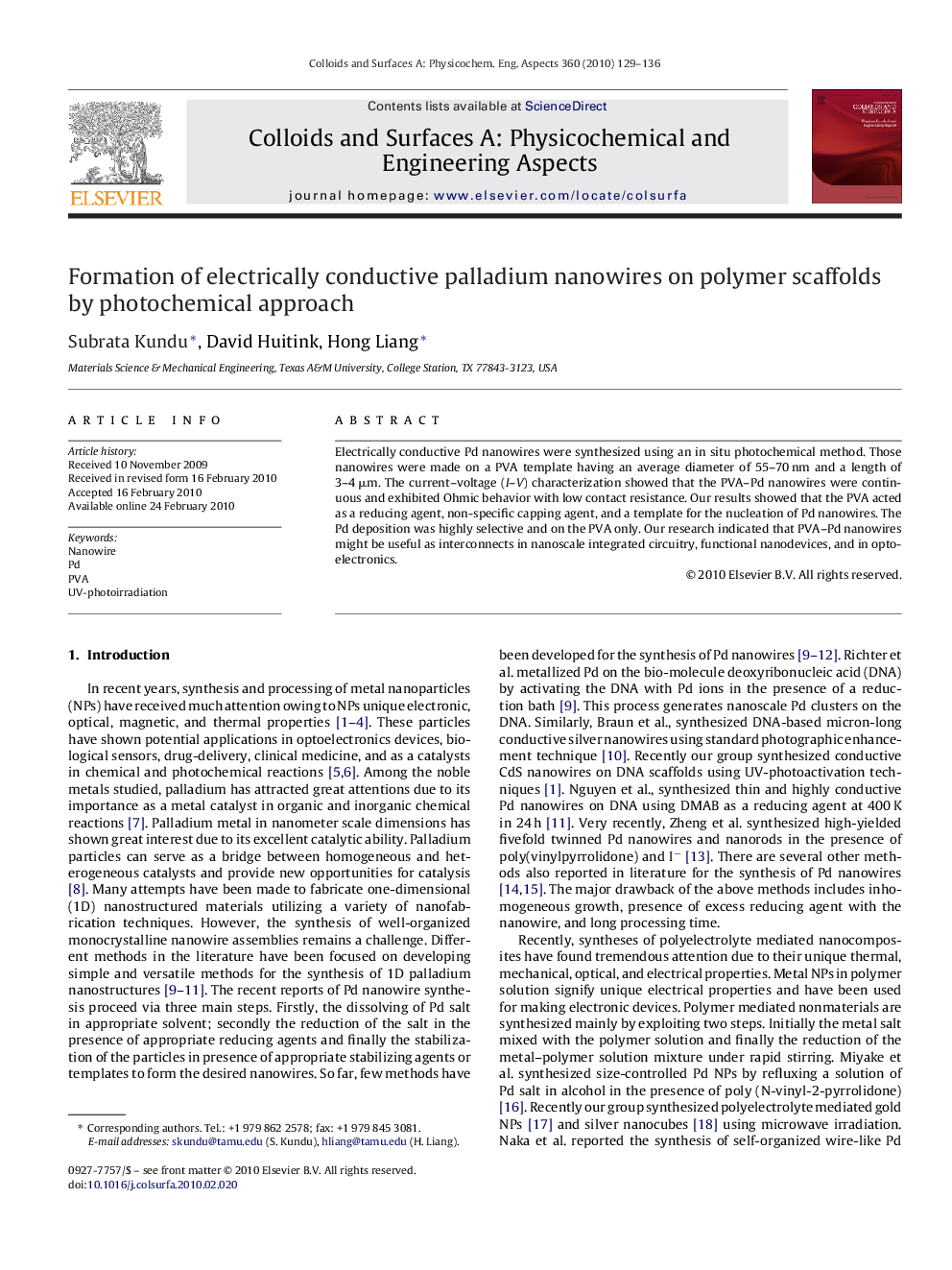| Article ID | Journal | Published Year | Pages | File Type |
|---|---|---|---|---|
| 595321 | Colloids and Surfaces A: Physicochemical and Engineering Aspects | 2010 | 8 Pages |
Electrically conductive Pd nanowires were synthesized using an in situ photochemical method. Those nanowires were made on a PVA template having an average diameter of 55–70 nm and a length of 3–4 μm. The current–voltage (I–V) characterization showed that the PVA–Pd nanowires were continuous and exhibited Ohmic behavior with low contact resistance. Our results showed that the PVA acted as a reducing agent, non-specific capping agent, and a template for the nucleation of Pd nanowires. The Pd deposition was highly selective and on the PVA only. Our research indicated that PVA–Pd nanowires might be useful as interconnects in nanoscale integrated circuitry, functional nanodevices, and in optoelectronics.
Graphical abstractElectrically conductive Pd nanowires were synthesized using an in situ photochemical method. Those nanowires were made on a PVA template having an average diameter of 55–70 nm and a length of 3–4 μm. The current–voltage (I–V) characterization showed that the PVA–Pd nanowires were continuous and exhibited Ohmic behavior with low contact resistance. Our results showed that the PVA acted as a reducing agent, non-specific capping agent, and a template for the nucleation of Pd nanowires. The Pd deposition was highly selective and on the PVA only. Our research indicated that PVA–Pd nanowires might be useful as interconnects in nanoscale integrated circuitry, functional nanodevices, and in optoelectronics.Figure optionsDownload full-size imageDownload as PowerPoint slide
